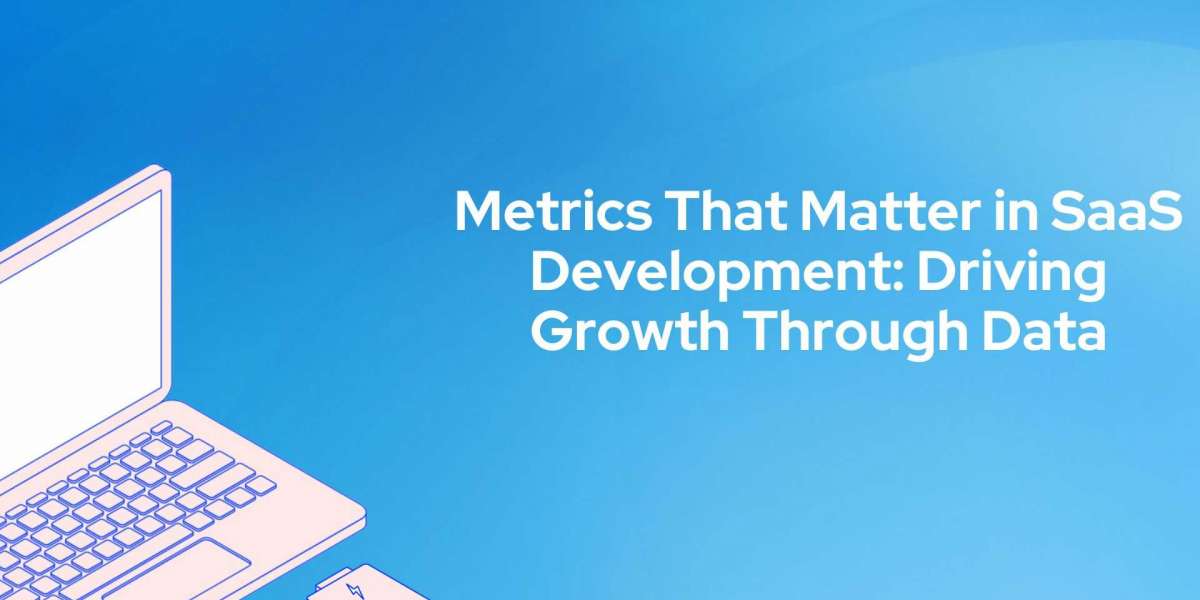In the competitive world of Software-as-a-Service (SaaS), development isn’t just about writing clean code or rolling out new features—it’s about making strategic, data-driven decisions that ensure sustainable growth. The success of a SaaS product hinges on understanding and tracking key performance indicators (KPIs) that reflect user behavior, product performance, customer satisfaction, and revenue generation.
This article dives deep into the metrics that matter most in SaaS development, explaining their significance, how to track them, and how they influence decision-making across product, engineering, and business teams.
Monthly Recurring Revenue (MRR)
What It Is:
Monthly Recurring Revenue (MRR) measures the predictable revenue a SaaS business can expect every month. It excludes one-time payments and focuses solely on subscription-based income.
Why It Matters:
MRR provides a clear picture of a company’s financial health and growth trajectory. It helps teams forecast future revenue, allocate resources, and evaluate the ROI of development efforts.
How to Use It:
- Segment MRR into new, expansion, contraction, and churned MRR.
- Use it to correlate the impact of new features or pricing changes.
Customer Churn Rate
What It Is:
Churn rate is the percentage of customers who cancel their subscriptions during a given time period.
Why It Matters:
High churn indicates dissatisfaction or a mismatch between the product and market needs. It also signals to developers which parts of the product may require improvement.
How to Use It:
- Pair churn rate with user feedback loops to uncover root causes.
- Implement product changes and measure churn rate before and after to test effectiveness.
Customer Lifetime Value (CLV or LTV)
What It Is:
CLV represents the total revenue a business can expect from a single customer account throughout its lifespan.
Why It Matters:
Understanding CLV helps determine how much you can spend on acquiring and supporting a customer while remaining profitable.
How to Use It:
- Guide decisions on marketing spend and product investments.
- Compare with Customer Acquisition Cost (CAC) to determine profitability.
Customer Acquisition Cost (CAC)
What It Is:
CAC is the total cost of acquiring a new customer, including marketing, sales, and onboarding efforts.
Why It Matters:
Knowing your CAC helps assess the efficiency of customer acquisition strategies and whether your product is scaling sustainably.
How to Use It:
- Optimize marketing channels to reduce CAC.
- Compare CAC to CLV to ensure healthy unit economics (CLV:CAC ratio ideally 3:1).
Active Users (DAU, WAU, MAU)
What It Is:
Daily Active Users (DAU), Weekly Active Users (WAU), and Monthly Active Users (MAU) measure how many users engage with your product in specific time frames.
Why It Matters:
These engagement metrics reflect how “sticky” your product is and how often users find value in it.
How to Use It:
- Identify usage trends across time.
- Spot drops in activity that may signal UX or performance issues.
Feature Adoption Rate
What It Is:
Feature adoption rate shows how many users are using specific features of your application.
Why It Matters:
It helps development teams evaluate the success of feature rollouts and determine what functionalities truly matter to users.
How to Use It:
- Track over time to assess long-term value.
- Use in A/B testing for new features.
Net Promoter Score (NPS)
What It Is:
NPS measures customer satisfaction and loyalty by asking how likely a user is to recommend your product to others.
Why It Matters:
A high NPS correlates with lower churn and greater organic growth through word-of-mouth referrals.
How to Use It:
- Collect feedback from promoters, passives, and detractors.
- Prioritize improvements based on user sentiment.
Customer Support Metrics
Key Sub-Metrics:
- First Response Time (FRT)
- Average Resolution Time
- Support Tickets per User
Why They Matter:
These metrics highlight product stability and user experience. High support volume may indicate usability or performance issues that the development team should address.
How to Use Them:
- Monitor post-deployment for feature-related issues.
- Feed insights into the product development backlog.
System Uptime and Reliability (SLAs)
What It Is:
Tracks the availability and performance of your SaaS infrastructure.
Why It Matters:
System downtime directly affects customer trust and retention. Development teams must ensure reliable performance under varied user loads.
How to Use It:
- Establish SLAs (Service Level Agreements).
- Use monitoring tools to detect and fix issues proactively.
Product Velocity
What It Is:
Measures how quickly the development team delivers value, such as the number of story points or features completed over a sprint or month.
Why It Matters:
Velocity reflects the efficiency and agility of your development process. It’s crucial for setting stakeholder expectations and release planning.
How to Use It:
- Track velocity trends to identify bottlenecks.
- Used to evaluate the impact of process changes or team scaling.
Conclusion: From Metrics to Momentum
Tracking the right metrics in SaaS development isn’t just about numbers—it’s about aligning the entire organization around shared goals. Whether it’s improving customer retention, optimizing product features, or scaling operations efficiently, the metrics listed above provide the compass for strategic growth.








